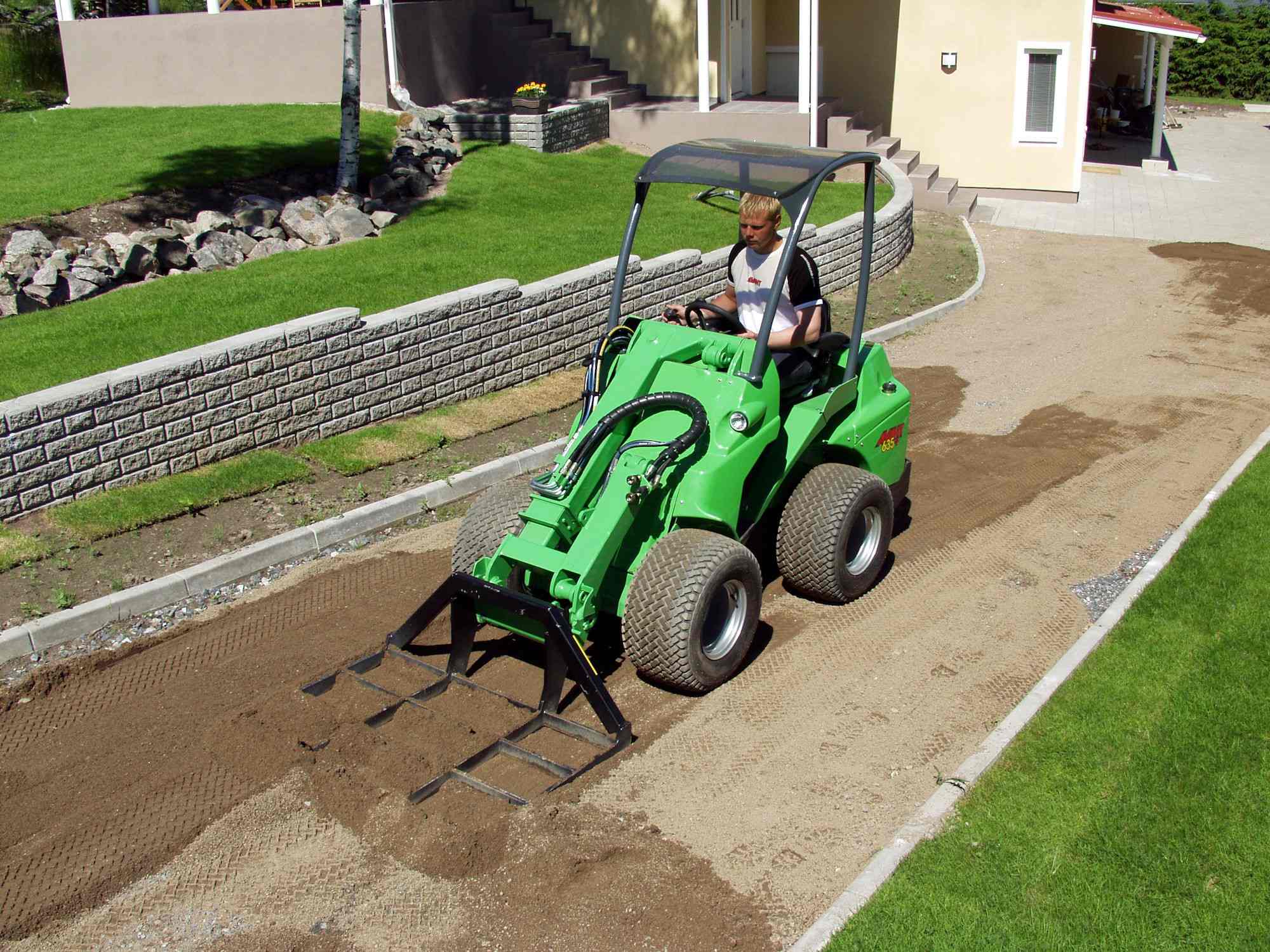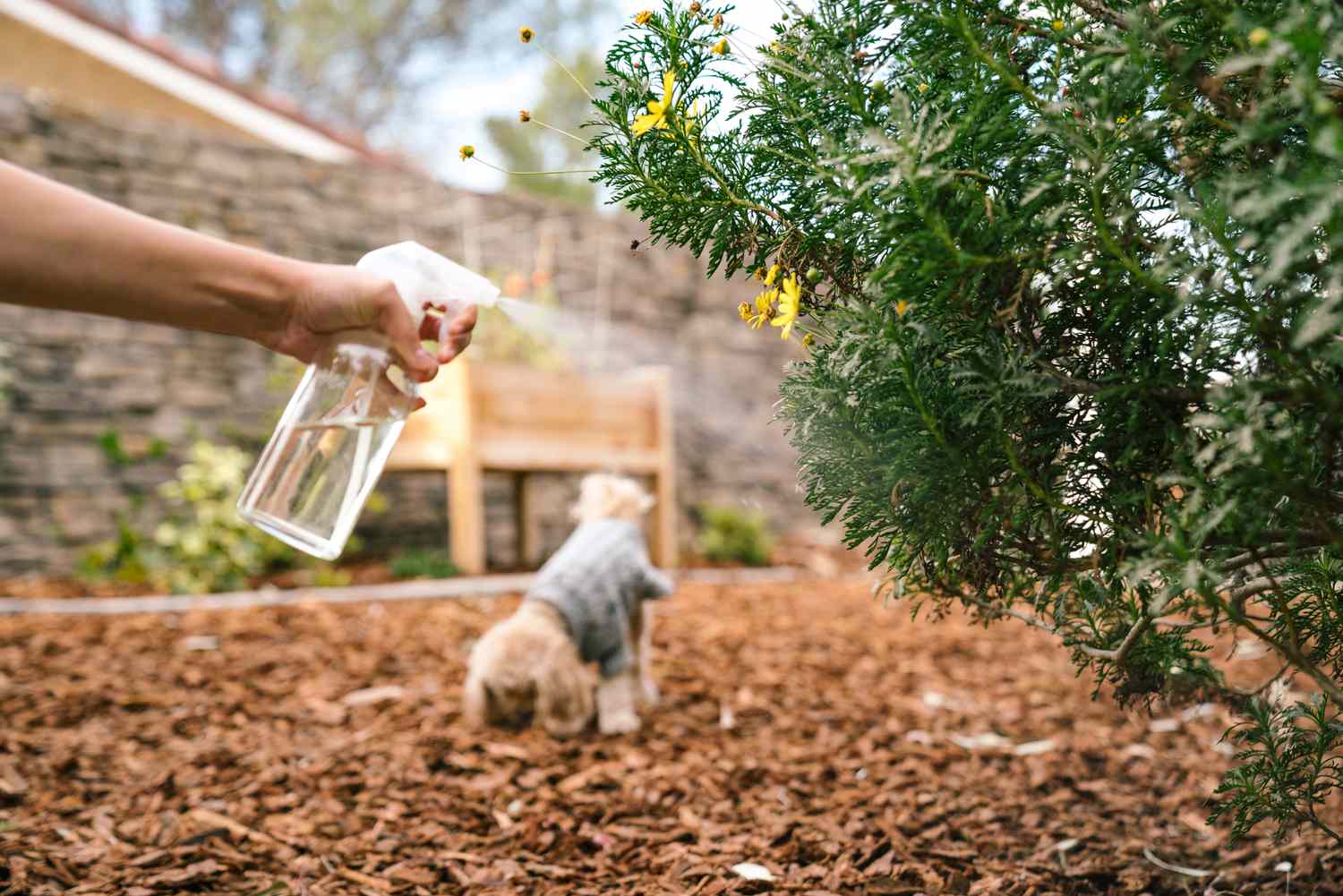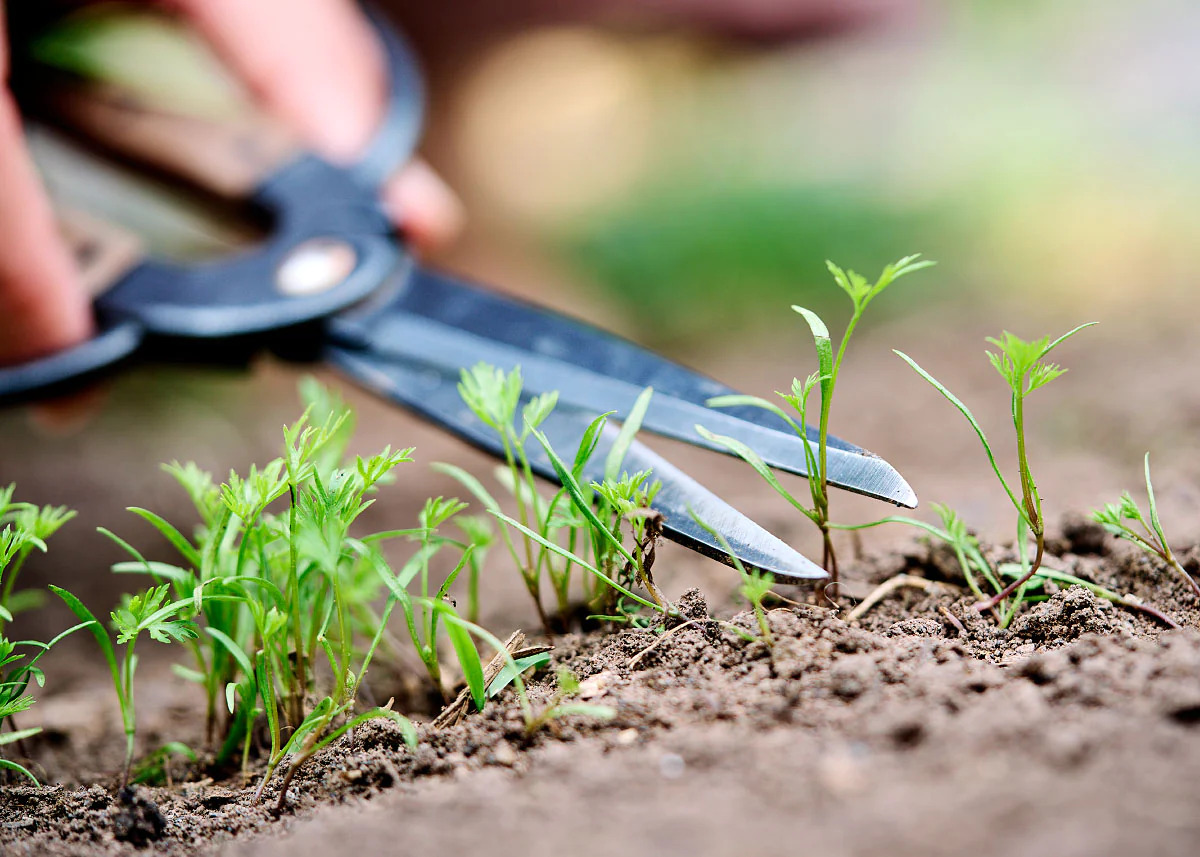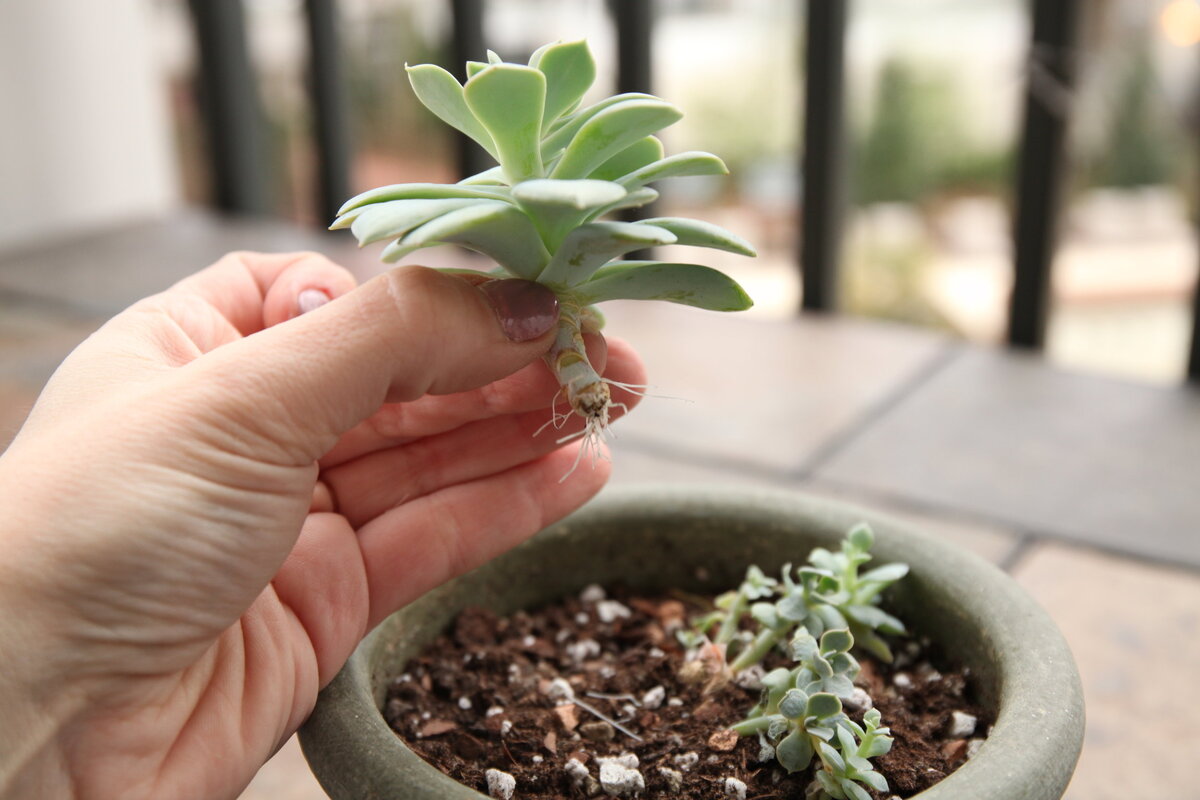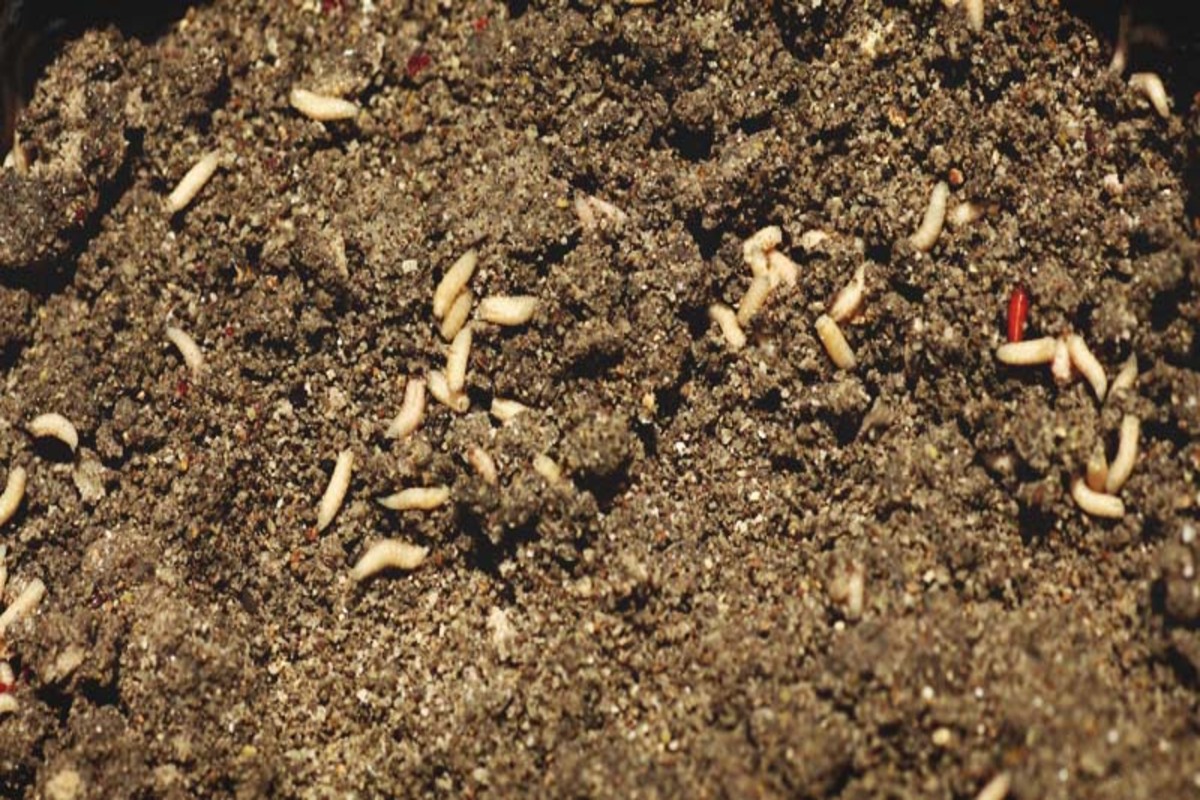Home>Gardening Techniques>DIY Projects>How To Pull Out Weeds


DIY Projects
How To Pull Out Weeds
Published: December 15, 2023
Learn how to pull out weeds in your garden with these easy and effective DIY projects. Get rid of unwanted plants and keep your garden looking beautiful!
(Many of the links in this article redirect to a specific reviewed product. Your purchase of these products through affiliate links helps to generate commission for Chicagolandgardening.com, at no extra cost. Learn more)
Table of Contents
Introduction
Weeds are a common nuisance in any garden or yard. They not only ruin the aesthetic appeal but also compete with your desirable plants for water, nutrients, and sunlight. The persistent presence of weeds can hinder the growth and health of your plants, making it crucial to tackle them effectively.
In this article, we will discuss the importance of pulling out weeds and provide you with a step-by-step guide on how to do it. We will also share some useful tips to ensure you are successful in removing weeds and preventing their re-growth in the future.
While there are several methods to control weeds, including chemical herbicides and natural remedies, pulling them out manually remains one of the most efficient and environmentally friendly approaches. It allows for targeted weed removal and minimizes the risk of harming desirable plants or contaminating the soil. Moreover, pulling weeds gives you a hands-on experience and a chance to connect with your garden.
Before diving into the process of weed removal, it is essential to invest in the right tools. Having the proper equipment will make your task easier and more efficient. Garden gloves, a sturdy hand trowel or weeding tool, a hand cultivator, and a bucket or bag for collecting the pulled weeds are the basic tools you will need. Additionally, a knee pad or cushion can provide comfort during prolonged weeding sessions.
Now that we understand the importance of removing weeds and have the necessary tools at our disposal, let’s delve into the step-by-step process of pulling out weeds effectively.
Why Pulling Out Weeds is Important
Weeds can quickly take over your garden if left unattended. Besides being unsightly, they pose several threats to the health and growth of your desirable plants. Here are a few reasons why pulling out weeds is crucial:
- 1. Competition for Resources: Weeds have a remarkable ability to compete with other plants for vital resources like water, sunlight, and nutrients. As they grow, they can steal these resources from your desired plants, leading to stunted growth and unhealthy plants.
- 2. Disease and Pest Infestation: Weeds can harbor pests and diseases that can spread to your cultivated plants. By removing weeds, you reduce the habitat for these pests and diseases, lowering the risk of infestations and infections in your garden or yard.
- 3. Aesthetics and Curb Appeal: Let’s face it; a garden overrun with weeds is not visually appealing. By eliminating weeds, you can maintain a neat and well-manicured landscape, enhancing the overall aesthetics and curb appeal of your property.
- 4. Preventing Weed Spread: Weeds reproduce rapidly through seeds, roots, or vegetative growth. If you allow weeds to go to seed or let their roots establish, you risk a widespread infestation that becomes even harder to control. By pulling weeds early and preventing them from reaching the reproductive stage, you can minimize future weed growth.
- 5. Promoting Plant Health: Removing weeds allows your desirable plants to receive the necessary resources without competition. This promotes their optimal growth, vigor, and overall health, leading to better yields, blooming flowers, and thriving vegetation.
These reasons highlight the importance of regularly pulling out weeds from your garden or yard. By investing time and effort in weed removal, you protect your plants, enhance the visual appeal of your space, and create an environment where your desired plants can thrive.
Tools Needed for Pulling Out Weeds
To effectively remove weeds from your garden, you will need a few essential tools. Having the right equipment makes the task more efficient and helps avoid damage to your plants. Here are the tools you will need for pulling out weeds:
- Garden Gloves: Invest in a pair of sturdy garden gloves to protect your hands from thorns, prickles, or any potential skin irritation from certain weed species. They also provide a better grip on the weeds, allowing you to pull them out more effectively.
- Hand Trowel or Weeding Tool: A hand trowel or a weeding tool with a sharp, narrow blade is ideal for loosening the soil around the base of the weed and lifting it out. Look for a tool with a comfortable grip and a durable construction.
- Hand Cultivator: A hand cultivator with multiple prongs or a forked end is useful for breaking up the soil and loosening the weed’s roots. It helps in efficiently removing weeds with deeper or more stubborn root systems.
- Bucket or Bag: Keep a bucket or a bag handy to collect the pulled weeds. This prevents them from reseeding or spreading around the garden. Proper disposal of weeds is essential to avoid any re-infestation.
- Knee Pad or Cushion: Weeding can be a time-consuming task, so it’s helpful to have a knee pad or cushion to provide comfort and support for your knees. This reduces strain and allows you to spend more time focused on pulling out weeds.
While these are the basic tools you will need for weed removal, you might also consider additional equipment such as a weed puller, long-handled weeder, or a hoe for larger areas or tougher weed species.
Remember, having well-maintained and sharp tools will make the process easier and more efficient. Clean your tools after each use and store them properly to ensure they remain in good condition for future weed removal tasks.
Step-by-step Guide on How to Pull Out Weeds
Pulling out weeds may seem like a simple task, but there are a few techniques that can make the process more effective and efficient. Follow this step-by-step guide to ensure you remove weeds properly:
- 1. Identify the Weeds: Take a close look at the weeds in your garden or yard. Different weed species have unique characteristics and growth habits. Understanding the weeds you’re dealing with can help you determine the best approach for removal.
- 2. Choose the Right Time to Weed: It’s recommended to weed when the soil is damp but not excessively wet. Weeding after rain or watering can make it easier to loosen the soil and remove weeds, as the roots are more pliable.
- 3. Use the Proper Technique: Grip the weed as close to the base as possible, ensuring you have a firm hold on it. With a twisting motion, gently but firmly pull the weed straight up from the soil. Try to remove the entire root system to prevent regrowth.
- 4. Work in Small Sections: It can be overwhelming to tackle the entire garden at once. Break down your weeding task into manageable sections and focus on one area at a time. This allows you to give proper attention to each weed and ensures thorough removal.
- 5. Dispose of the Weeds Properly: Place the pulled weeds directly into a bucket or a bag to prevent them from reseeding or spreading. Avoid composting weeds with seeds or matured roots, as this could lead to weed re-infestation.
- 6. Be Mindful of the Surrounding Plants: Take care not to damage your desirable plants while pulling out weeds. Slow and deliberate movements help minimize accidental uprooting of nearby plants. Use your weeding tools carefully around delicate plant roots.
- 7. Repeat the Process Regularly: Weeding is an ongoing process as new weeds can quickly appear in your garden. Make it a habit to weed regularly, ideally once a week, to keep the weed population under control and prevent them from spreading.
By following these steps, you can effectively pull out weeds from your garden or yard, promoting the growth of your desired plants and maintaining a well-maintained space.
Tips for Effectively Removing Weeds
While the basic technique of pulling out weeds is straightforward, there are some additional tips and tricks that can help make your weed removal efforts more successful. Here are some tips to effectively remove weeds:
- 1. Weed Early and Often: It’s easier to pull out young weeds with shallow roots. Regularly inspect your garden and remove weeds as soon as you spot them. This prevents them from establishing a strong root system and spreading throughout your garden.
- 2. Water the Area Before Weeding: If the soil is dry and compacted, watering the area before weeding can make it easier to loosen the soil and pull out the weeds. Wetting the soil helps in loosening the grip of the roots, facilitating their removal.
- 3. Weed After Rainfall: Weeding after rainfall is advantageous as the soil is moist, and the weeds are more easily uprooted. The damp soil provides the perfect conditions for weed removal, ensuring you can remove the entire root system.
- 4. Work on Softened Soil: After watering or rain, the soil becomes softer. Take advantage of this opportunity to remove weeds. Use a hand cultivator to loosen the soil around the weed, allowing for easier extraction of the roots.
- 5. Pull Weeds at the Base: To remove weeds effectively, grab them as close to the base as possible. By pulling the weed from the base, you increase the chances of getting the entire root system, preventing regrowth.
- 6. Dispose of Weeds Properly: Ensure that the pulled weeds are collected and properly disposed of. Avoid throwing them back into the garden or compost pile, as this can lead to re-infestation. Bag the weeds and dispose of them in the appropriate manner.
- 7. Mulch the Garden: Applying a layer of organic mulch around your desirable plants helps suppress weed growth by blocking sunlight and preventing weed seeds from germinating. Mulch also helps retain moisture in the soil, reducing competition from weeds.
- 8. Maintain Your Garden: Regularly maintaining your garden by mowing the lawn, trimming plants, and keeping it tidy helps prevent weeds from taking hold. A well-maintained garden with healthy plants is less susceptible to weed invasion.
By incorporating these tips into your weed removal routine, you will increase your chances of effectively removing weeds and keeping them under control in your garden or yard.
Preventing Future Weed Growth
While pulling out weeds is essential for maintaining a weed-free garden, preventing their regrowth is equally important. Here are some strategies to help prevent future weed growth:
- Mulch Your Garden: Applying a layer of mulch around your plants helps smother weed seeds and prevents them from germinating. Organic mulches, such as wood chips or straw, also help retain moisture, regulate soil temperature, and improve overall soil health.
- Use Weed Barriers: Weed barriers, such as landscape fabric or cardboard, can be placed beneath mulch to provide an additional layer of protection against weed growth. These barriers block sunlight and prevent weed seeds from finding their way into the soil.
- Hand Weed Regularly: Even with preventive measures, some weeds may still find a way to sprout. Regularly inspect your garden and hand weed any new growth before they have a chance to spread or establish deep roots.
- Water Plants, Not Weeds: When watering your garden, focus on watering the base of your plants, not the entire garden bed. By minimizing water contact with bare soil areas, you can reduce the chances of weed seeds germinating.
- Improve Soil Health: Healthy soil promotes strong plant growth and helps ward off weed invasions. Add organic matter, such as compost or well-rotted manure, to improve soil structure, fertility, and water-holding capacity, giving your plants a competitive edge over weeds.
- Rotate Crops: If you have a vegetable garden, practice crop rotation to disrupt the life cycle of both weeds and pests. This technique helps prevent the buildup of specific weeds and ensures a healthier, more diverse garden ecosystem.
- Plant Weed-Suppressing Ground Covers: Ground covers such as clover, creeping thyme, or low-growing native plants can act as natural weed suppressors. These plantings fill in bare spaces, shading the soil and inhibiting weed growth.
- Stay Vigilant: Regularly monitor your garden for any signs of weed growth. Early detection and immediate action can prevent weed infestations from becoming overwhelming and difficult to control.
By implementing these preventive measures, you can significantly reduce the likelihood of future weed growth in your garden, allowing your plants to thrive without the competition from invasive weeds.
Conclusion
Pulling out weeds is a vital task in maintaining a healthy and visually appealing garden or yard. By removing weeds, you give your desired plants the best chance to grow and thrive without competition for essential resources. Additionally, preventing weed growth helps preserve the overall aesthetics and curb appeal of your outdoor space.
In this article, we discussed the importance of pulling out weeds and provided a step-by-step guide on how to do it effectively. We also shared useful tips for successful weed removal and strategies for preventing future weed growth.
Remember to invest in the right tools, such as garden gloves, a hand trowel or weeding tool, a hand cultivator, and a bucket or bag for collecting weeds. Working in small sections and being mindful of surrounding plants will help you remove weeds without causing damage. Dispose of the pulled weeds properly to prevent reseeding or spreading.
To prevent future weed growth, consider using mulch, weed barriers, and regular hand weeding. Improve soil health, rotate crops, and plant weed-suppressing ground covers to create an inhospitable environment for weeds.
By consistently following these practices, you can maintain a weed-free garden or yard and enjoy the beauty and productivity of your plants. Happy weeding!
